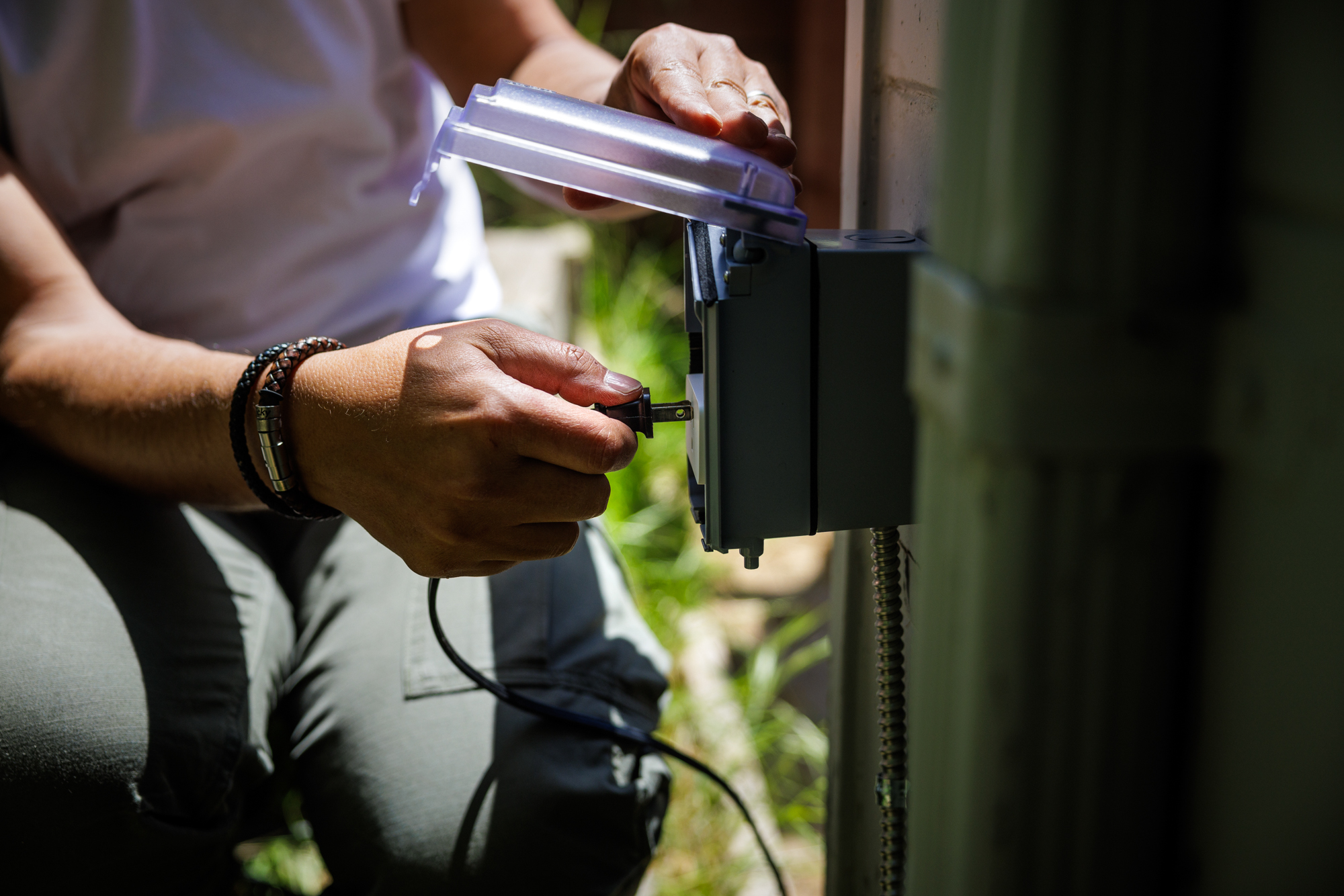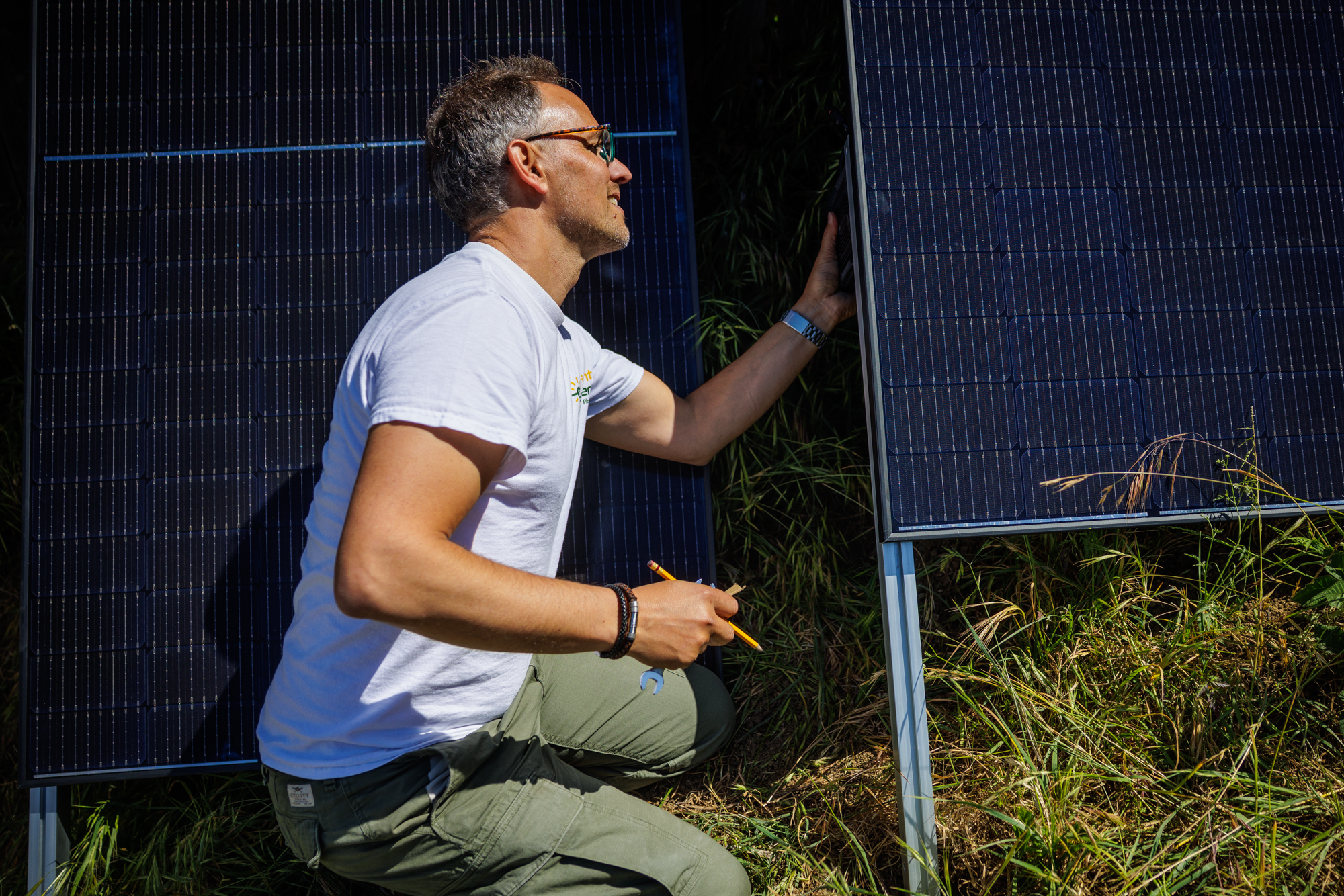Now, del Chiaro said, consumers are more likely to say: “‘I’m just going to install my own system, hang it on my own balcony and PG&E never needs to know.’”
Californians, struggling with soaring electricity bills, are eager to adopt the technology.
Advocates believe the state’s market has massive potential. They’re motivated by two examples: Utah, which recently passed legislation allowing the technology to take off once additional safety measures are implemented, and Germany, where millions of solar panels dot balconies across the country.
But there are clear hurdles, and fuzzy ones too. Utility PG&E said its customers must register the technology before they plug it in. But small solar advocates argue the registration process should be faster for these systems than it is for rooftop solar. It’s time-consuming, costly, and exactly the type of bureaucracy they’re trying to cut out.
A nonprofit called Bright Saver installed Milner’s system — it’s one of the many start-ups championing the small arrays. The organization is hoping to create a movement and plays an umbrella role for companies, policymakers and safety certification organizations.
Bright Saver’s first product is two solar panels and accessories, which can power about a fifth of the average Californian’s energy needs: covering lights and small electronics, maybe even an efficient refrigerator. It can produce 800 watts and costs $2100, but the founders think the costs will drop in the coming years.

The organization estimates it will take Milner, who purchased his system at a discounted rate of $1700, four to five years to make back the upfront investment in the panels through bill savings. That’s about three times faster than how long it takes to recoup the investment from rooftop solar.
Milner was motivated to try out solar because, as a father of two young kids, he wants to take action on climate change. And like most Californians, his energy bills are high, about $75 to $80 per month.
“It fixes our energy cost a little bit, because rates keep rising,” Milner said.
As easy as buying an IKEA-style table
Pranav Myana, 21-year-old founder of Zoltux, an energy company based in San Francisco, is working on his own version of this technology: a shippable set of two lightweight panels, just millimeters thick, together about the size of a medium dining room table top. Myana said you can assemble it in five minutes.
He calls it an “instant solar pod” and is pricing it at $1199, which he estimates will pay for itself in three to four years. The company is taking pre-orders now and plans to ship the product in early fall.
Myana was inspired to build Zoltux after visiting his family’s homeland in India, a town called Sircilla, where the main industry is weaving with electric looms. When power became expensive and inconsistent, mounting debts led to many suicides that, Myana said, included some of his family members.

“It showed me just how fundamental energy was to everything we do,” he said.
Some companies like Bright Saver employ staff to install their panels, but a goal is to cut out professionals altogether. That’s because roughly half the price of getting solar is in labor and “soft costs” like permitting.
The dream is for plug-in solar to be purchased off the shelf and set up by the customer, IKEA-style.
Already, plug-in solar companies are working to add a small battery to their setups to gather extra power, store it and deploy it when the sun goes down.
But plug-in solar has risks, like most appliances. Without safety measures or proper equipment, wires could overheat and ignite a fire, or the systems could send power back to the grid when there’s a power outage, endangering a line worker sent out to make repairs.
Start-ups address these by plugging into a dedicated circuit, using a “smart plug” that can shut the solar panels off if there’s excessive current on the system, or a sensor to shut it off when the larger grid goes down.
Why isn’t plug-in solar already everywhere?
For one thing, there’s no safety standard for a complete plug-in solar system. Safety standards are typically shown by a “UL” stamp, or similar marking, on the back of products, indicating they’ve met requirements set by Underwriters Laboratories, an independent testing organization.
These exist for individual parts of the system only, which some companies assemble and view as sufficiently safe. UL said they are working on a safety standard for a full system.

Plug-in solar does not fit easily into layers of national, state, and local electric code and operates in a regulatory gray area in California, where utilities want customers to register the product as they would a rooftop system.
“There’s these big gaps where it’s certainly not that you can’t do this, but it’s also not clear that you can absolutely do this,” without registering the system, said Kevin Chou, a co-founder of Bright Saver.
To stay within California rules and skirt filling out an interconnection agreement with utilities, Bright Saver’s technology prevents excess power from feeding back into the grid.
Source link